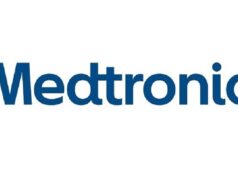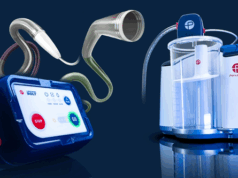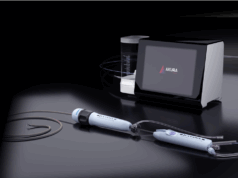
At the 2018 Vascular Societies’ Annual Scientific Meeting (VSASM; 27–29 November, Glasgow, UK), Bruce Campbell from Exeter Medical in Exeter, UK, who previously chaired National Institute for Health and Care Excellence (NICE) advisory committees for interventional procedures and medical technologies, discussed what the venous field can learn from the debate in the vascular community over the NICE guidelines for abdominal aortic aneurysm treatment. Campbell suggested that one area which currently requires further evidence is the use of ultrasound-guided thrombolysis for deep vein thrombosis.
The recent draft NICE aortic guidelines caused controversy in 2018, as they concluded based on current available Level 1 evidence from UK-based randomised controlled trials that vascular surgeons are not recommended to offer endovascular aneurysm repair (EVAR) if surgical repair is possible—or if the patient is unfit for surgery. “There is uproar in the vascular community”, Campbell said, “about the fact that there is disagreement with these guidelines.” The debate continues at the time of publication, as publication of the final guidelines has been postponed.
Speaking to Venous News, Ian Franklin (Imperial College London, UK) who chaired the session commented that the purpose of the session at the VSASM was to prompt discussion around avoiding a situation wherein a guidelines committee examines a venous therapy and finds “the evidence and data simply is not there”.
“For all the treatments for venous disease, including lysis and stenting, we need to consider what we can do to avoid a similar situation to that of EVAR,” Campbell said. Examining the abdominal aortic aneurysm controversy more in-depth, Campbell outlined the points by which the Vascular Society argued the NICE draft document were limited. The Vascular Society argued that NICE “gave undue emphasis to just one randomised controlled trial, focused on long-term outcomes only, failed to take account of patient preferences, focused largely on cost-effectiveness, ignored implementation and training issues, and finally, used outdated evidence”, explained Campbell. “In terms of the production of the evidence… NICE uses what they consider to be the best evidence, and focused on the main aim of abdominal aortic aneurysm patients, namely to prolong life by preventing aneurysm rupture.”
However, Campbell underlined the important differences between aneurysms and venous disease. “Untreated aortic aneurysms” Campbell pointed out, “does absolutely nothing to quality of life. Venous disease does affect quality of life: varicose veins do, ulcers definitely do, and then there is deep vein thrombosis and post-thrombotic syndrome—so they are quite different in that respect.” Secondly, venous treatments are in general less costly in comparison to endovascular aortic treatments—“miniscule compared to the cost of fixing an aneurysm”, Campbell emphasised. Therefore, cost-modelling may prove less of a threat to venous treatment guidelines than it has for EVAR.
In addition to these concerns, current recommendations such as the NICE CG168 guidelines on varicose veins have experienced poor implementation rates, leading to worries about uptake in future deep venous treatment guidelines. “We know that treating varicose veins and venous ulcers is very cost-effective,” Campbell explained, “the problem however lies with affordability, as varicose veins are so common that it would cost the UK National Health Service (NHS) too much to treat them all. That is different to acute deep vein thrombosis. That is a problem which does not affect millions.”
In fact, upon review of current data, Franklin commented to Venous News that although there is a “very strong body of evidence” in the superficial venous field, “there are some clear gaps we need to fill for acute deep venous and venous stenting.” Identifying these gaps methodically is important, Franklin suggests, “as the venous world hopes to avoid a similar situation to the aortic guidelines, five years from now.”
“What evidence does NICE need?”, Campbell asked, answering, “quite simply, well-designed, high quality trials.” Such studies should include the correct population of patients and indications, as well as appropriate comparators and relevant clinical outcomes along with quality-of-life measures. In fact, Campbell pointed to a document published by NICE in 2012 which recommends further research to examine thrombolysis for proximal deep vein thrombosis, as the current evidence was identified to be weak. In this Individual Research Recommendation, the specific outcomes required are clearly defined by NICE as mortality, major bleeding, venous thromboembolic event recurrence at three and 12 months, post-thrombotic syndrome at two years including incidence rate and severity, as well as quality of life.









